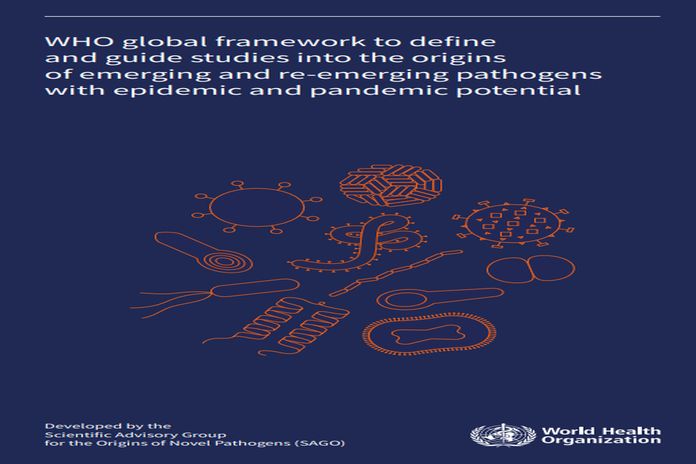GENEVA, Switzerland – With the support of the Scientific Advisory Group for the Origins of Novel Pathogens (SAGO), the World Health Organization (WHO) has published a global framework to help Member States comprehensively investigate the origins of new and re-emerging pathogens. While there are a number of tools available for investigating infectious disease outbreaks, this is the first unified, structured approach to investigating the origins of a novel pathogen. This framework aims to fill that gap by providing a comprehensive set of scientific investigations and studies. It is the first version of a “how-to” guide that will be updated as and when needed, based on feedback from users.
As each outbreak and pandemic demonstrates, human and animal health is threatened by the increasing risk of the emergence of known (such as Ebola, Nipah, avian influenza, Lassa and Monkeypox viruses) and novel pathogens with epidemic and pandemic potential (novel influenza, MERS-CoV, SARS-CoV-1, SARS-CoV-2), the ability to prevent, and when we cannot prevent, to swiftly contain outbreaks and identify their origins is scientifically, morally, and financially more critical than ever.

The WHO global framework outlines scientific investigations and studies for six technical elements:
- Early investigations of the first identified cases/ clusters / outbreaks to identify potential sources of exposure, collection of samples at the source, define the characteristics of the novel pathogen involved for establishment of diagnostic assays.
- Human studies: to understand the epidemiology including clinical presentation, modes of transmission, pathology and earliest presence in syndromic surveillance samples.
- Human/Animal interface studies to identify potential animal reservoirs, intermediate hosts and reverse zoonoses.
- studies to identify insect vectors or other sources of infection as well as earliest presence in the environment. …
- Genomics and Phylogenetics studies to identify precursor strains, genomic characteristics, evolution in intermediate hosts and humans and spatial distribution over time.
- Biosafety/Biosecurity studies to determine if a breach in laboratory or research activities may have been associated with the first cases.
The WHO Global framework has been designed as a resource for scientists, researchers, public health authorities, and investigators in Member States. It provides guidance when and how to initiate such multi-disciplinary investigations and offers recommendations to countries on the capacities and tools needed to successfully implement them. This includes the capacities needed such as human resources, human, animal, and environmental surveillance systems; biosafety and biosecurity regulations; and laboratories with testing and sequencing expertise – and the importance of sharing the findings of such investigations as soon as possible to guide next steps. These recommendations were developed to align with the International Health Regulations (IHR) and using a One Health approach.
Timely and comprehensive investigations into pathogens’ origins are critical for preventing and containing global health crises. The findings from such investigations provide the basis for stopping outbreaks before they begin, halting transmission chains and reducing the risk of pathogen spillover from animals to humans. They also can confirm or exclude the possibility of an unintentional breach in laboratory biosafety and biosecurity.
To achieve this, is it critical for countries to conduct these are sharing initial findings in a rapid, complete and transparent manner as soon as results are available to ensure the implementation of measures to mitigate further transmission and prevent new spillover events and, eventually, future pandemics.
“Understanding when, where, how and why epidemics and pandemics begin is both a scientific imperative, to prevent future outbreaks, and a moral imperative for the sake of those who lose their lives to them,” said Dr Tedros Adhanom Ghebreyesus, WHO Director-General. “This framework provides for the first time comprehensive guidance on the studies that are needed to investigate the origins of emerging and reemerging pathogens. If it had been in place when COVID-19 struck, the quest to understand its origins may have been less contentious and more successful. WHO continues to call on China to share all information it has on the origins of COVID-19, so that all hypotheses can be investigated.”
Established in November 2021 and made up of independent experts from around the world, the SAGO was tasked with identifying the best technical and scientific approaches to understanding the origins of emerging and re-emerging pathogens and developing this global framework. The SAGO forms part of a strengthened health emergency preparedness and prevention system developed by WHO, its Member States and many health and scientific partners.





